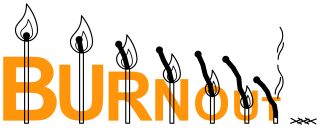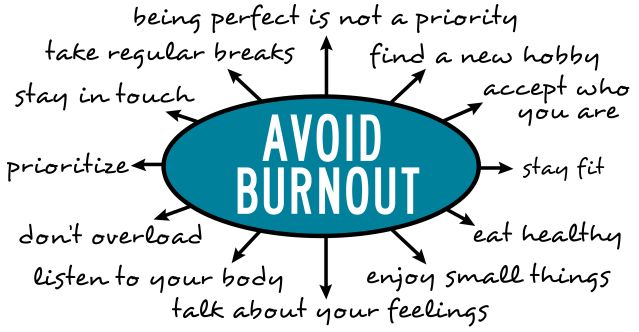Burnout
How Burnout Is Changing Our Lives
Burnout is on the rise, but you can take steps to protect yourself.
Posted March 20, 2023 Reviewed by Davia Sills
Key points
- Burnout doesn't happen overnight but instead occurs over time.
- Researchers Zrazhevskaya et al. have found historical context for ominously similar descriptions of burnout throughout time.
- Burnout may share a similar clinical presentation and etiology with depression, but it is considered distinctly different.
- Burnout can be challenged by reserving time, integrating novel events, recognizing limitations, cognitive reframing, and more.

Perhaps you've woken up today, like so many days recently, feeling a lack of motivation simply to get out of bed. Perhaps the hobbies you once loved have started to disappear from your daily routine. And maybe your days feel like some kind of sick-cycle carousel, as though you are living the same one over and over. It may even be that lately, the smallest details, like brushing your teeth or dressing to go out, feel uncharacteristically tiring. These are just a few of the ways burnout has been described, and the truth is, burnout doesn't simply happen overnight; in fact, it can be insidiously slow, occurring over the course of weeks and months.
“From a February 2023 survey of 10,243 global workers by U.S. think-tank Future Forum, 42 percent reported burnout, its highest figure since May 2021” (Christian, n.d.).
If you conducted a Google search right now using the word "burnout," you would likely find 286,000,000-plus results and a number of variations of burnout, including things like pandemic burnout, parental burnout, physician burnout, healthcare burnout, pediatric nurse burnout, farmer burnout, employee burnout, and more. Additionally, the phenomenon appears to be rooted throughout our history.
.jpg?itok=DXztORuu)
A historical context for burnout
It may well be that this thing we call burnout has been with us in various forms since the dawn of time. For instance, researchers Zrazhevskaya et al. have found ominously similar descriptions of burnout arising as far back as the Bible, with distinct examples noted in the stories of Moses and Elijah (2020). Additionally, throughout history, we are met with various examples, from Hippocrates' discussions on fatigue to experiences recounted from the Trojan War and similar "burnout-like" issues emerging in Roman and Greek civilizations.
Notable figures throughout history, like Charles Darwin, Virginia Wolf, Thomas Mann, and Oscar Wilde, were all diagnosed with what could have been defined as burnout (Robson, n.d.).
"Burnout," however, was actually first referenced in the work of Freudenberger from his studies on staff burnout (Freudenberger, 1974). He noted physical markers that included exhaustion, fatigue, frequent headaches, gastrointestinal disorders, sleeplessness, and shortness of breath, alongside behavioral signs like frustration, anger, a suspicious attitude, a feeling of omnipotence or overconfidence, cynicism, and signs of depression (Heinemann & Heinemann, 2017). In 1976, burnout syndrome was defined by Maslach and Jackson as "a three-dimensional syndrome characterized by exhaustion, cynicism, and inefficacy" (Lastovkova et al., 2018).
“Our brains are simply ill evolved to deal with the modern working environment. The increasing emphasis on productivity—and the emotional need to prove one’s worth through one’s job—leaves workers in a permanent state of fight or flight" (Robson, n.d.).
From a more recent clinical definition presented by researchers Demerouti et al. (2008), "burnout" is described as a "psychological state of exhaustion stemming from persistent exposure to stressors, while lacking sufficient resources to efficiently cope with such stressors." Interestingly, what burnout is and whom it affects is still a greatly debated topic. In fact, some business leaders challenge the notion by attempting to glamorize their extreme work cultures as productive to the detriment of their employees' mental and physical health.
Who is truly at risk for burnout syndrome?
The atomization of the term has taken on some confusion about exactly what burnout is and whom it truly affects. Although most current studies have focused on employees and healthcare as prominent data sources for understanding burnout syndrome, more research needs to be done to understand its reach into other dimensions and roles, such as those of students, parents, and more (Hammarström et al., 2023).
In addition, there is also tremendous disagreement on burnout syndrome, which may include ideas about its inclusion or non-inclusion as a mental disorder, its differentiation or similarities with depression, the variation of ways we might measure the phenomenon, and more.
Knowing what to look for
Although burnout may share a similar clinical presentation and etiology with depression, it is considered distinctly different (Bianchi et al., 2017). In a study by Tavella and Parker (2020), participants reported that "burnout was associated with higher functioning, less effect on self-esteem, less suicidal ideation, more hopeful states than depression, and characterized by anxious and activated states with feelings of heaviness and slowness." To this end, psychologist Dr. Sherrie Bourg Carter, in her post "The Tell-Tale Signs of Burnout: Do You Have Them?" details more of the somatology surrounding burnout, which can also include chronic fatigue and insomnia
What you can do

The graphic above should remind us of important elements to consider when dealing with burnout, but here are a few more to consider.
Reserve time for yourself during the day. Researcher and Chair for the Center for Workplace Diversity and Inclusion Research at the University of Phoenix, Dr. Kimberly Underwood, suggests blocking out "me" time on the work calendar during the work week. She states, "that little gray block of time you schedule in your Outlook calendar allows for refocusing and re-centering and can make a big difference in overall productivity."
Proactively integrate novel activities. Burnout is also based on the staggering contributive effect of "cyclic sameness" or the repetition of things we experience daily. Introducing something new into your daily cycle can help. Although it may sound counter-intuitive, adding one new and novel thing for a season can be restorative to balancing your life. Perhaps it is bike riding in the spring, aikido classes in the summer, and meditation in the fall.
Be aware of your limitations and stand by them. This means knowing when you are taking on too much, such as saying yes to every task given at work, booking too many appointments to meet in a day, or believing that doing more is better.
Take micro-respites from life. Taking a day off from work or going on a short one-day trip can be a great mental reset because it forces you to leave your daily routine and engage in life from a different context.
Action before motivation—a simple equation. Burnout may leave you feeling as though you have no motivation to try any of these things mentioned. But sometimes, the best rule of thumb is to not think about how you will engage or find your motivation, but rather to simply do it! Bring yourself into the action of doing before you have the chance to think about it.
Learn to ask for help. Sometimes we let pride get in the way, but when we are burned out, the luxury of pride needs to leave the room. It is important to know that you can ask for help from the people around you, whether that means family, friends, co-workers, teachers, or even your boss. Your self-sacrificing will only hurt you in the long run. Be honest and specific about what you need.
Burnout continues to rise, so making sure you are always strongly aware of what you are feeling and doing during your days will ensure your own longevity and health for the future.
References
Bianchi, R., & Brisson, R. Burnout and depression: causal attributions and construct overlap [published online November 17, 2017]. J Health Psychol.
Bianchi, R., Schonfeld, I. S., & Laurent, E. (2015). Is it time to consider the “burnout syndrome” a distinct illness?. Frontiers in public health, 3, 158.
Christian, A. (n.d.). Is it impossible to end burnout? Www.bbc.com. Retrieved March 15, 2023, from https://www.bbc.com/worklife/article/20230309-is-it-impossible-to-end-burnout.
Freudenberger, H. J. (1974). Staff Burn-Out. Journal of Social Issues, 30(1), 159–165. https://doi.org/10.1111/j.1540-4560.1974.tb00706.x
Hammarström, P., Rosendahl, S., Gruber, M., & Nordin, S. (2023). Somatic symptoms in burnout in a general adult population. Journal of Psychosomatic Research, 168, 111217. https://doi.org/10.1016/j.jpsychores.2023.111217
Heinemann, L. V., & Heinemann, T. (2017). Burnout Research. SAGE Open, 7(1), 215824401769715. https://doi.org/10.1177/2158244017697154
Lastovkova, A., Cardner, M., Rasmussen, H. M., Sjoberg, L., Groene, G. J. de, Sauni, R., Vevoda, J., Vevodova, S., Lasfargues, G., Svartengren, M., Varga, M., Colosio, C., & Pelclova, D. (2018). Burnout syndrome as an occupational disease in the European Union: an exploratory study. Industrial Health, 56(2), 160–165. https://doi.org/10.2486/indhealth.2017-0132
Robson, D. (n.d.). The reasons why exhaustion and burnout are so common. Www.bbc.com. https://www.bbc.com/future/article/20160721-the-reasons-why-exhaustion-and-burnout-are-so-common
Tavella, G., & Parker, G. (2020). Distinguishing burnout from depression: An exploratory qualitative study. Psychiatry Research, 291, 113212.
Zrazhevskaya, I. A., Bykov, K. V., Topka, E. O., Peshkin, V. N., Isaev, R. N., & Orlov, A. M. (2020). The Evolution of Representations about the Syndrome of Emotional Burnout. Psikhiatriya, 18(4), 127–138. https://doi.org/10.30629/2618-6667-2020-18-4-127-140




